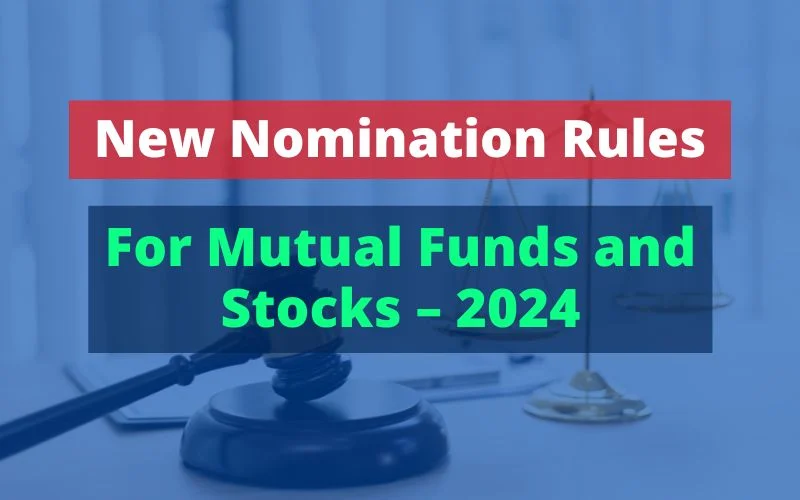The recent consultation paper released by SEBI focused on four primary areas that can make mutual fund investment more cost-effective. In this article, we will closely understand the below-mentioned four areas.
- Re-structure Total Expense Ratio (TER) Structure
- Enhancing Transparency
- To introduce performance-based TER
- To cap the exit load

Re-structure of Total Expense Ratio (TER) Structure
What is TER?
The total Expense Ratio (TER) is the total cost of running and managing a mutual fund scheme. It is one of the vital elements that is directly related to the mutual fund performance. Higher TER can lead to lower performance of the fund compared to the same fund in the same category having lower TER.
At present, slab-based TER applies to various categories of schemes viz, Equity Schemes, Debt Schemes, Hybrid Schemes, and Solution Oriented Schemes.
| Assets Under Management (AUM) | Maximum TER as a percentage of daily net assets of Open-ended Equity Oriented Mutual Fund | |
| TER for Equity funds | TER for Debt funds | |
| On the first Rs. 500 crores | 2.25% | 2.00% |
| On the next Rs. 250 crores | 2.00% | 1.75% |
| On the next Rs. 1,250 crores | 1.75% | 1.50% |
| On the next Rs. 3,000 crores | 1.60% | 1.35% |
| On the next Rs. 5,000 crores | 1.50% | 1.25% |
| On the next Rs. 40,000 crores | Total expense ratio reduction of 0.05% for every increase of Rs.5,000 crores of daily net assets or part thereof. | Total expense ratio reduction of 0.05% for every increase of Rs.5,000 crores of daily net assets or part thereof. |
| Above Rs. 50,000 crores | 1.05% | 0.80% |
In the above table, you will notice at the lowest AUM size (1st Rs. 500 Crores of the daily net asset), the cap is 2.25%, and as the scheme grows larger, TER gets lower.
Proposal:
The revised slabs propose the replacement of scheme-wise TER with asset-class-wise TER, which means there will be a single cap for equity mutual funds (investment in equity & equity-related instruments), another for debt, and a proportional for hybrid funds (depending on their equity-debt split). As an investor in these types of Mutual Funds, you may enjoy lower costs associated with your investments.
Enhancing Transparency
The Total Expense Ratio, as the term suggests, should include all expenses. It should be in the interest of transparency, including the total expenses charged to investors at any point in time. However, presently certain additional expenses are permitted to be charged (Brokerage and transaction costs, Goods, and Services Tax on investment and advisory, etc.) over and above the TER; thus, there is ambiguity and lack of transparency in how different Mutual Funds charge unitholders.
Proposal:
There should be no over-and-above TER fee to be charged to the investors. TER limit should be inclusive of all expenses and charges, including GST.
Proposed Direct plans TER,
Direct Plan TRE = Regular Plan TER – Distribution commission charged to Regular Plan
SEBI aims to increase transparency and protect investors’ interests in the Mutual Fund industry.
To introduce performance-based TER
SEBI observed that irrespective of the performance of a scheme (relative to its Benchmark), the AMCs charge management fees and expenses daily.
Proposal:
To make it a win-win situation, SEBI proposed AMC performance-based fees; this means AMC can charge an extra fee if the fund performs well and meets a specific minimum return called the hurdle rate. However, if a mutual fund underperforms and fails to reach the minimum return, it cannot charge additional fees beyond the base rates. This mechanism ensures that you, as an investor, are only charged extra fees when the fund outperforms its benchmark.
To start with, performance-linked TER can be enabled for active open-ended equity schemes.
To Cap the Exit Load
SEBI has observed that AMCs can charge high exit loads even when a scheme does not perform well and the value of the investment goes down. Currently, AMC can charge the investors an exit load of up to 5% (Mutual Funds generally charge 1% – 2% as an exit load), which gets credited back to the scheme.
Proposal:
Considering AMC charges between 1% – 2% as an exit load and that the exit load is credited back to the scheme, it is proposed that the exit load of an open-ended scheme to be lowered to a maximum permissible limit of 2%.
The maximum permissible exit load was revised from 7% of the NAV to 5% in March 2021.
These proposed changes aim to protect investors and ensure fair practices in the mutual fund industry.
Fascinating Insight about Direct Plans Viz Regular Plans
Apart from the above four areas, the consulting paper has also shown how Direct plans outperform benchmarks compare to regular plans.
| Scheme Performance vis-à-visBenchmar | Number of Schemes (Active Schemes) | |||||||
| 1 Year Return | 3 Years Return | 5 Years Return | 10 Years Return | |||||
| More than 1.25% of underperformance to the Benchmark | 17.23% | 25.75% | 26.70% | 37.57% | 26.22% | 40.30% | 10.18% | 22.80% |
| Upto 1.25 % (equivalent to max. tracking difference permissible for debt ETFs/Index Funds) of underperformance to the Benchmark | 26.04% | 32.24% | 25.78% | 29.71% | 29.01% | 33.04% | 23.53% | 37.74% |
| % of Schemes meeting the Benchmarkor Outperforming | 56.73% | 42.01% | 47.53% | 32.72% | 44.77% | 26.67% | 66.29% | 39.46% |
Schemes that outperformed the Benchmark:
- In the 1st year, the table shows that almost 57% of direct and 42% of regular plans outperformed their benchmarks.
- In the 3rd year, the table shows that nearly 48% of direct and 33% of regular plans outperformed their benchmarks.
- In the 5th year, the table shows that almost 45% of direct and 27% of regular plans outperformed their benchmarks.
- In the 10th year, the table shows that nearly 66% of direct and 39% of the regular plans outperformed their benchmarks.
📖Must Read: How To Invest In Direct Mutual Funds
Conclusion
The SEBI aims to protect investors’ interests. SEBI’s priority is constantly protecting the investor’s interest. That’s why investors should always choose an investment that is regulated.
Important Articles Related to Personal Finance





